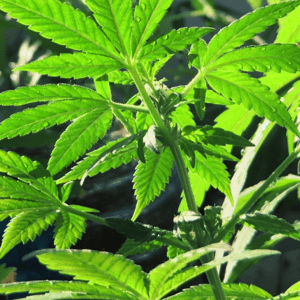Federal Report Explores Enhancing Cannabis and Hemp Testing

Federal Science Agency Releases New Report to Ensure Accuracy in Cannabis Testing
July 2024 – Washington, D.C. – The National Institute of Standards and Technology (NIST) has released a comprehensive report to assist testing laboratories in accurately determining cannabinoid content in cannabis products. This report, a part of the NIST’s Cannabis Laboratory Quality Assurance Program (CannaQAP), focuses on analyzing plant material samples, following earlier guidance on moisture content, toxins, and heavy metals.
Enhancing Laboratory Precision
The NIST launched CannaQAP in 2020 with the aim of helping laboratories measure key chemical compounds in cannabis products, including oils, with greater precision. This initiative emerged after the federal legalization of hemp under the 2018 Farm Bill. The program is divided into three exercises, the first of which dealt with measuring up to 17 different cannabinoids in hemp oil, culminating in a report published in mid-2021.
Current Focus on Plant Material
The new report, Exercise 2 of CannaQAP, shifts focus to dried cannabis plant samples rather than hemp oil. Besides cannabinoid testing, this exercise included moisture content and 13 toxic elements. Walter Brent Wilson, a research chemist at NIST and co-author of the report, emphasized the continued importance of cannabinoids due to their increasing presence in over-the-counter supplements.
“Since cannabinoids are increasingly used in over-the-counter supplements, they were included again in this CannaQAP exercise for participants to continue to evaluate their in-house analytical methods in dried hemp plant materials,” Wilson said.
Accurate measurement of heavy metals was also a crucial part of the exercise. These elements, as environmental pollutants, can accumulate in cannabis, posing significant risks to human health upon consumption. Additionally, moisture measurement remains vital since federal law mandates cannabinoid content be measured on a dry-weight basis.
Detailed Findings and Methodologies
The 304-page report details various aspects of the testing process, including sample acquisition, preparation, analytical methods, and recommendations. Specific cannabinoids tested included delta-8 THC, THCA, total delta-9 THC, CBD, CBDA, and total CBD, alongside minor cannabinoids like CBC, CBDV, and CBG.
One of the significant findings was the variability in testing results between different laboratories. While within-lab repeatability generally met the standards set by the Association of Official Analytical Chemists (AOAC), between-laboratory reproducibility did not. This discrepancy was attributed to the diverse analytical methods used across labs.
“The criteria for between-laboratory precision are meant to be applied to variabilities from multiple laboratories using a single analytical method, not variabilities from multiple laboratories using multiple analytical methods, as was the case for this study,” the report explained.
Calibration and Accuracy
Calibration emerged as a critical factor in testing reliability. The accuracy was highest when the substance level tested fell near the middle of the calibration curve, with lower levels proving less accurate and higher amounts requiring dilution. The report recommends using calibration standards that meet ISO standards and ensuring all purity information is reviewed.
Future Directions
A third CannaQAP exercise is already underway, combining elements of the previous exercises to evaluate overall improvement in laboratory methods. These efforts are crucial as the hemp and marijuana markets continue to expand, often hinging on precise measurements to distinguish between legal and illegal products. For instance, federally legal hemp must contain less than 0.3 percent THC on a dry weight basis.
The Drug Enforcement Administration (DEA) recently clarified that this threshold includes delta-9 THC and its precursor THCA, which converts to delta-9 THC upon heating. This clarification has sparked debate among experts, with some disputing the DEA’s interpretation. Meanwhile, federal and state lawmakers are considering standards for delta-8 THC, a psychoactive compound derived from hemp, which remains a contentious issue.
Industry Implications
The new NIST report underscores the importance of standardized testing procedures in ensuring product safety and regulatory compliance. As research and regulations evolve, these guidelines will help laboratories provide accurate and reliable data, supporting both consumer safety and industry integrity.
In a related development, separate federally funded research published earlier this year outlined new methods for distinguishing hemp from marijuana, further contributing to the accuracy and reliability of cannabis testing.











